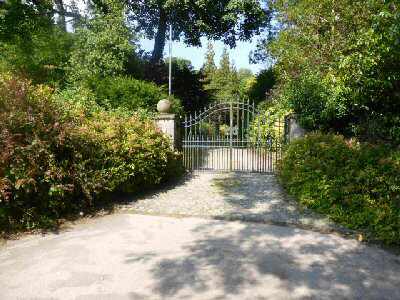PARWICH
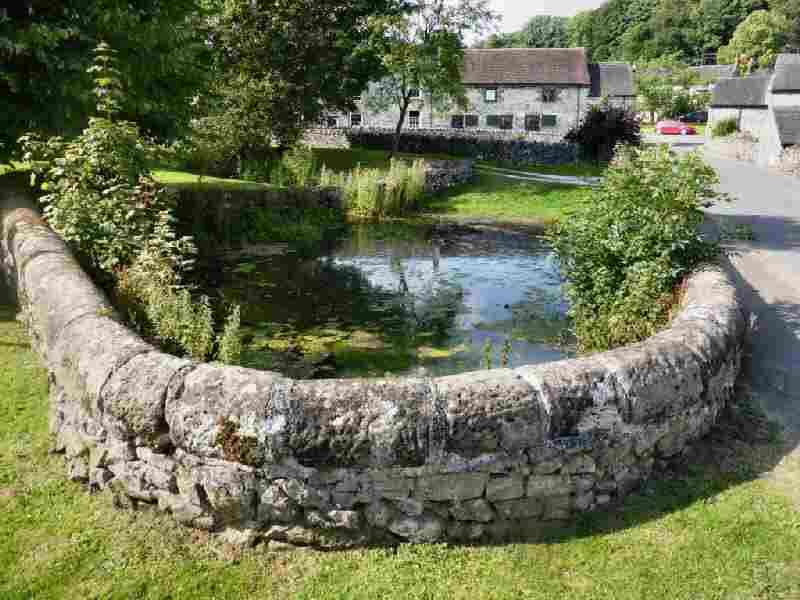
PLAN YOUR DAY OUT
Location: Parwich is between the A515 Ashbourne to Buxton Road and the B5056 Fenny Bentley to Grangemill road (SK187544).
Visit: Allow at least an hour and take a walk around the village, if possible, obtaining a copy of the excellent ‘Parwich Walk Guide’ before you start – the internet also provides valuable information; visit St Peter’s Church, usually open to the public, and find out more about the carved Saxon tympanum over the west door.
Refreshments: The Sycamore Inn, situated on the eastern side of Parwich, is an excellent example of a traditional village public house that also doubles as the village shop.
Walk: Parwich is in wonderful walking country, but not being on the main route to anywhere, it remains relatively undiscovered. After crossing a series of fields, the walk descends steadily to the Bletch Brook, before climbing up quite steeply to join the Tissington Trail, and crossing more fields on the route to Tissington. Leaving Tissington, the trail is rejoined at the old railway station and followed for a short distance before heading across the fields back to Parwich.
Special Places of Interest in the Locality: Tissington Hall, a fine Jacobean Manor House in the heart of the village, which has been the home of the FitzHerbert family for 500 years. Please check the website for opening details. – Ashbourne is one of Derbyshire’s finest towns, with a wealth of Georgian architecture and a cobbled Market Place. – Roystone Grange, where evidence has been found of occupation in Roman times by native hill farmers. A field system of that period is seen by following the trail set up. Another farm was established here at the time of the Norman Conquest and was later given to a Cistercian Abbey and developed as a sheep farm.
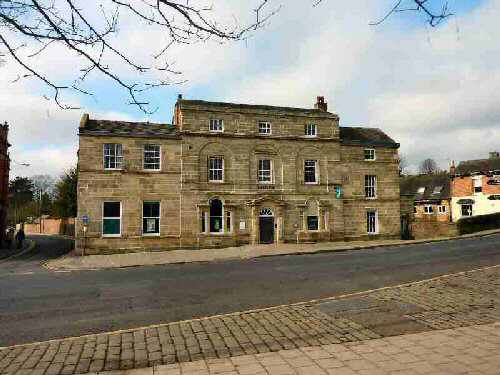
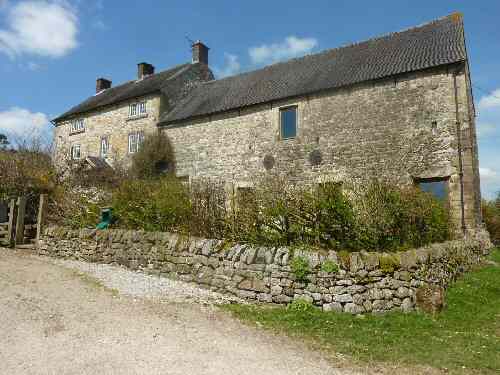
INTRODUCTION
Apart from walkers who come to explore the network of footpaths that pass through Parwich, not many visitors to Derbyshire discover one of the prettiest villages in the county, or have even heard of its existence. It changed somewhat when the Sunday Times, in March 2015, nominated the village as ‘one of the best places to live in Britain’.
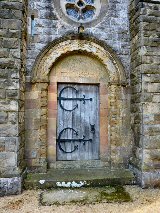
Situated on the edge of the Peak District, Parwich is not on any of the main routes through the area, and as a result, it does not suffer from excessive traffic noise and dirt, unlike many other villages. Its neat limestone houses of various shapes and sizes stand in picture postcard fashion along winding lanes and narrow ginnels. In the summer, the cottages, with their attractive gardens, window boxes, and hanging baskets, provide a vivid splash of colour against the green background of the steeply rising hillside.
PREHISTORIC REMAINS
The hills that rise above Parwich to over 1,000 feet form a rough, uneven plateau where a considerable number of prehistoric remains have been found. There is evidence of some medieval lead mining in the locality. But the village was spared the worst ravages of the lead mining boom. Farming has been crucial to the village’s prosperity, but it is now in decline. As a result, people of working age mainly travel to neighbouring towns and cities, or one of the large quarries in the area.
ST PETER’S CHURCH

A visit to St. Peter’s Church can be pretty confusing, as the present church, built in 1873, but its style dates back to a much earlier period. The previous church had stood on the same site for over 800 years before being removed to make way for the new church. A carved Saxon tympanum over the west door creates much interest. It depicts the Lamb of God with a cross, a stag trampling on a serpent, a wolf and other strange animals.
VILLAGE PROPERTIES
Attractive Parwich Hall, three storeys high, overlooks the village from its dominant position on the hillside. It has a mainly brick façade, which is somewhat unusual in this part of the Peak District, as stone is less expensive. Sir Richard Levinge built it on top of the foundations of a previous property in 1747. Later, the Evans family acquired the hall; they were wealthy industrialists from Darley Abbey near Derby, but they did not take up residence. During the 19th century, it was a vicarage. But the vicar was so unpopular with his parishioners that when he moved away, they burned an effigy of him on the village green. It is now in private occupation.
The former Parwich Hospital, now a private house known as Rathbone Hall, is named after Florence Rathbone, who helped finance its construction in 1912 as a convalescent home. It stands impressively on the hillside apart from any other dwellings. It seems ideally fitted to the purpose for which it was initially intended. During the Second World War, the Red Cross utilised it. After that, it was in the hands of the NHS for a time before serving as the Parwich Care Centre, which closed in 2000 due to falling demand.
Further down the hillside on the eastern side of Rathbone Hall is the stone-built Orchard Farm. It contains a wide range of building styles, some dating back to at least the 17th century. On the western side, Knob Hall was established in the early 1900s as a cheese factory and was then known as Parwich Creamery. However, after approximately 25 years, it reverted to a private residence. A nearby well supplied the water for the creamery, but before that, it was hand-drawn.

SYCAMORE INN
Sycamore Inn dates to the 17th century, with the brick extension at the rear two centuries later. Here you can not only enjoy quality refreshments at this award-winning pub, which won the CAMRA ‘ Country Pub of the Year’ award in 2015, but also take home a bag of shopping. The pub has taken over from the last village shop, which closed a few years ago.
VILLAGE AMENITIES
The school still survives, housed in an impressive limestone building with gritstone quoins. Another of the many fine buildings in Parwich is the Vicarage, the vicar having responsibility for five parishes. The village’s great strength lies not only in its attractiveness but also in its community spirit and willingness to adopt new initiatives.
It was something that the Sunday Times was no doubt alluding to when it referred to the village as ‘one of the best places to live in Britain’.
Parwich Royal British Legion Club dates to 1951, and the Memorial Hall to 1962. Other local initiatives have included the creation of cricket and football pitches, the provision of tennis courts and the establishment of a children’s play area. In addition, restoration and environmental projects have been undertaken.
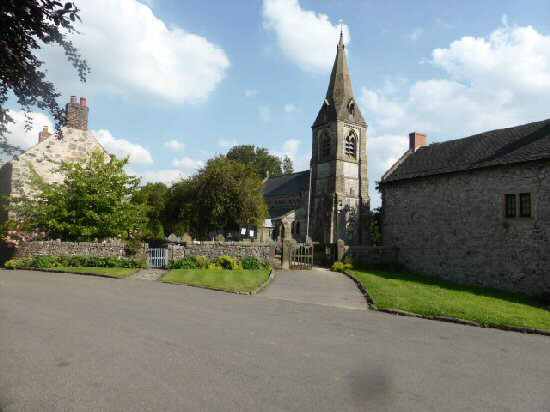

TEN FASCINATING FACTS ABOUT PARWICH
1. Parwich’s pleasant little cricket ground, located on Parson’s Croft, also provides facilities for tennis and bowls. The land was sold to the village by Parwich Oddfellows, and it got its name because the rental income was for charitable purposes.
2. A modern house known as Bear Stake Croft obtained its name in even more unusual circumstances. The field in which it sits has the same name as the house, where, according to local folklore, bear baiting once took place.
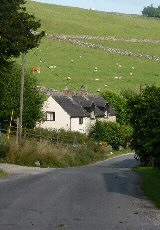
3. The Sycamore Inn stands close to the Village Green, which was once much larger. It is now divided into sections, with pleasant grassed areas.
4. The ‘The Dam’ is an attractive water feature where ducks swim and sheep were once dipped, which gives the area an air of peaceful spaciousness.
5. Minninglow Lime Kiln, which plays a significant role in the village’s industrial history, was recently restored.
6. The Norman font in St. Peter’s Church is an unusual shape. It is round at the top, but a few inches below the rim, it tapers down to 16 sides, and stands on a circular shaft, inscribed with the date 1662. It may be the date of installation in the church after being moved for safekeeping during the Civil War.
7. Roystone Grange, a steep climb to the north of Parwich, is the location of a Romano-British farmstead and manor, identified to the left of the track leading to the present-day Roystone Grange Farm.
8. It was occupied as early as the 2nd century by a community of Britons who had been ‘Romanised’, who farmed the valley.
9. Brook Cottage is on a bend by the village brook and is accessible by two footbridges.
10. The present Memorial Hall, opened in 1963, was built to commemorate the dead from both World Wars. It replaced a previous corrugated iron structure known as the Parish Institute.
PARWICH AND TISSINGTON WALK


